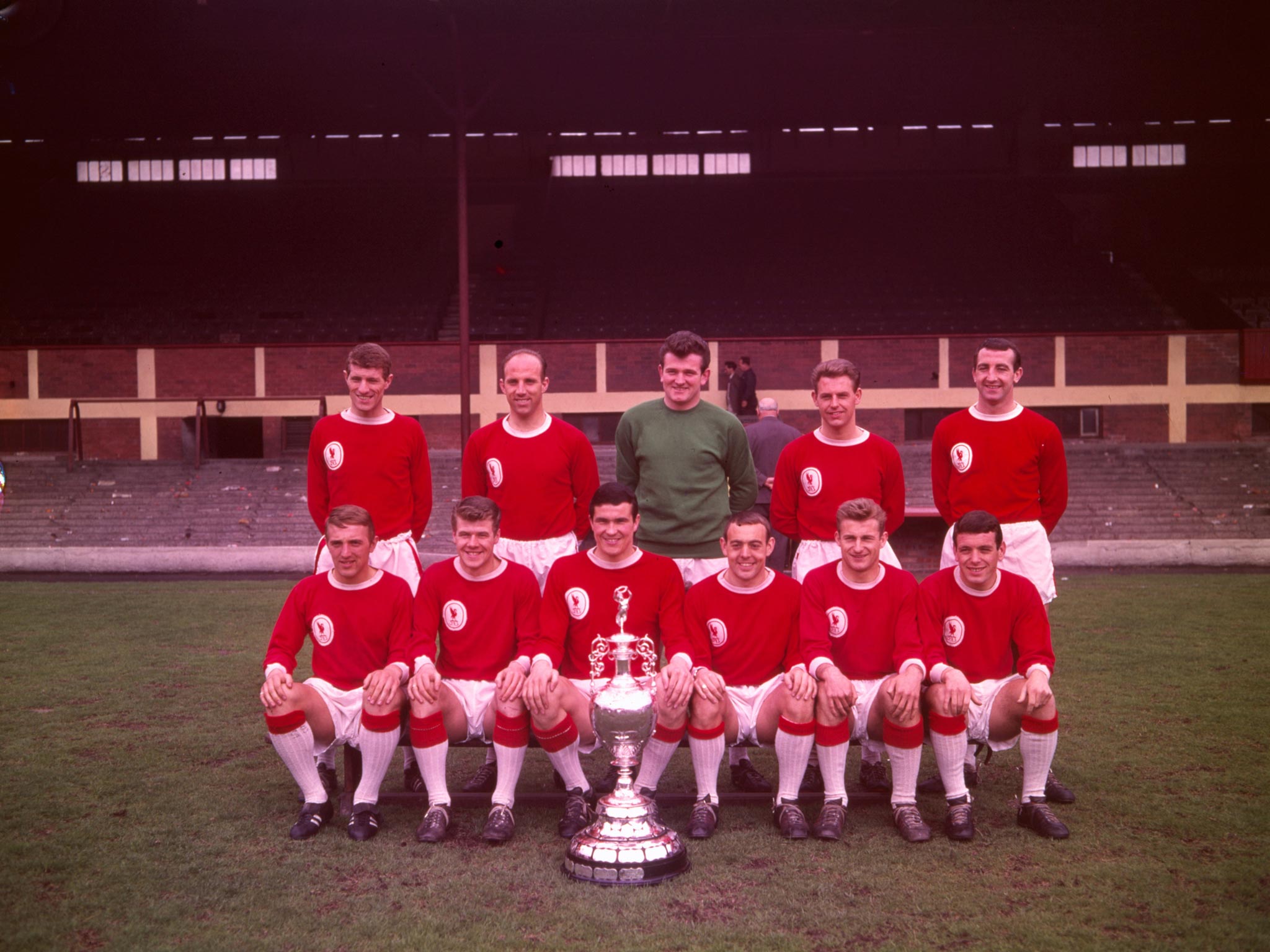Liverpool v Manchester City: Current Reds look uncannily like ’64 Beatles-inspired band

Your support helps us to tell the story
From reproductive rights to climate change to Big Tech, The Independent is on the ground when the story is developing. Whether it's investigating the financials of Elon Musk's pro-Trump PAC or producing our latest documentary, 'The A Word', which shines a light on the American women fighting for reproductive rights, we know how important it is to parse out the facts from the messaging.
At such a critical moment in US history, we need reporters on the ground. Your donation allows us to keep sending journalists to speak to both sides of the story.
The Independent is trusted by Americans across the entire political spectrum. And unlike many other quality news outlets, we choose not to lock Americans out of our reporting and analysis with paywalls. We believe quality journalism should be available to everyone, paid for by those who can afford it.
Your support makes all the difference.The resemblances are uncanny. A Liverpool team that finished outside the top six the previous season launches an unexpected title challenge. Their success is based on a striking duo who both hit over 20 league goals in the campaign. A run of successive wins carries them on a tide of growing excitement towards a first championship in over a generation.
Yet this is not 2014. It is 50 years ago this month and Bill Shankly’s first great Reds team was about to clinch the 1964 First Division title with a 5-0 destruction of Arsenal in front of a swaying, jubilant Kop. Moreover they did so at a time when Liverpool, led by The Beatles and the genius of Lennon and McCartney but also thanks to the likes of Gerry and the Pacemakers, The Searchers and Cilla Black, had rocketed to preeminence in the pop charts. During the 1963-64 season, of the 14 British No1s an incredible 10 were by groups or artists that hailed from Merseyside – and one of the few that didn’t, Peter and Gordon’s “A World Without Love”, was written by Paul McCartney. That spring Liverpool must have felt like the centre of the entire planet.
“It was all so unexpected,” recalls Liverpool historian Eric Doig, who was an Anfield regular in 1963-64, grew up in the streets surrounding the stadium and whose grandfather played for the club. “We had a steady, settled team, I think we only used 16 players that season and some of them only got a game or two. We went on a great run and the excitement grew and grew.
“The crowds were incredible, you had to get there hours beforehand to be sure of getting in and they would sing all the Merseybeat songs. It was very special.”
To put Liverpool’s success in context, two seasons before they were still in the Second Division, having endured several agonising years of just missing out on promotion. Shankly put an end to that. Appointed as manager in 1959, the Scot helped the side to take that final step back to the top flight by signing a pair of tough compatriots: Ron Yeats, a rugged centre-half who Shankly invited reporters “to walk around him in the dressing room”, and Ian St John, a clever and brave centre-forward who rapidly established a prolific partnership with Roger Hunt.
Liverpool ran away with the Second Division championship in 1962 and finished eighth in their first season back in the First Division. Nevertheless, a tilt at the title did not look on the cards at the start of 1963-64, after all they had just finished 17 points behind champions Everton. The signing of Peter Thompson from Preston helped change that. “Peter was tremendous, a real tricky winger, we had him on the left and Ian Callaghan on the right,” says Doig. “St John played a little deeper, with Roger Hunt as the out-and-out centre-forward, and the team really started to play for one another.”
They got off to a slow start, losing their first three home games, but turned a corner by beating Everton 2-1 in the Anfield derby on 28 September, Callaghan scoring twice.
A rare win at Manchester United clinched by an even rarer Yeats goal followed in November, but Liverpool hit a rough patch in February when they were knocked out of the FA Cup in the quarter-finals by struggling Second Division side Swansea. They were back in fourth – with games in hand – in mid-March but seven straight wins, including a crucial 3-1 success away at Tottenham Hotspur on Good Friday, Hunt scoring a hat-trick, saw them to the club’s first title in 17 years.
It all culminated with the trashing of Arsenal on 18 April – “an incredible day”, remembers Doig. Thankfully the BBC sent a camera crew to Anfield – this was several months before Match of the Day started – and captured not just the five goals but the spectacle of the Kop in full flight, 28,000 delirious people belting out “Can’t Buy Me Love” and, ahem, Cilla’s “Anyone Who Had A Heart”.
Sunday’s home match with Manchester City, combined with the 25th anniversary of Hillsborough, promises to be a special, moving occasion, but it will have to go some to top that.
Join our commenting forum
Join thought-provoking conversations, follow other Independent readers and see their replies
Comments